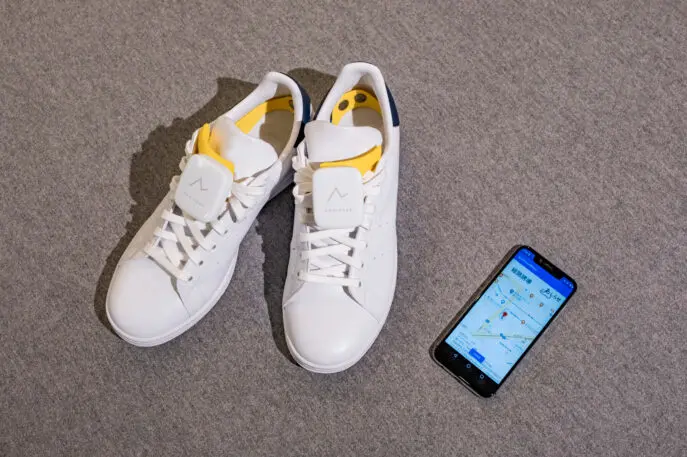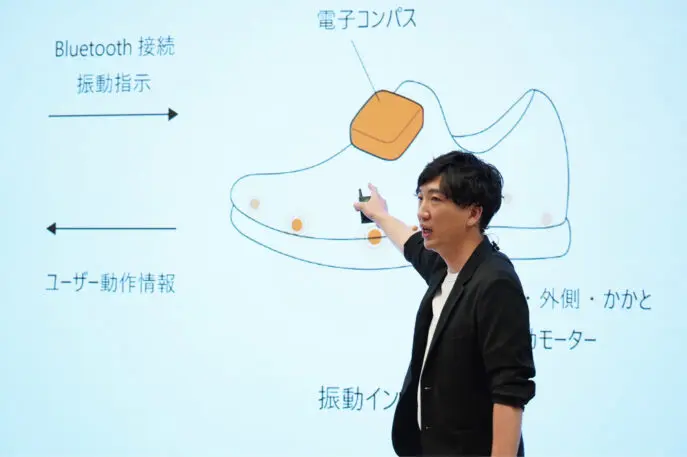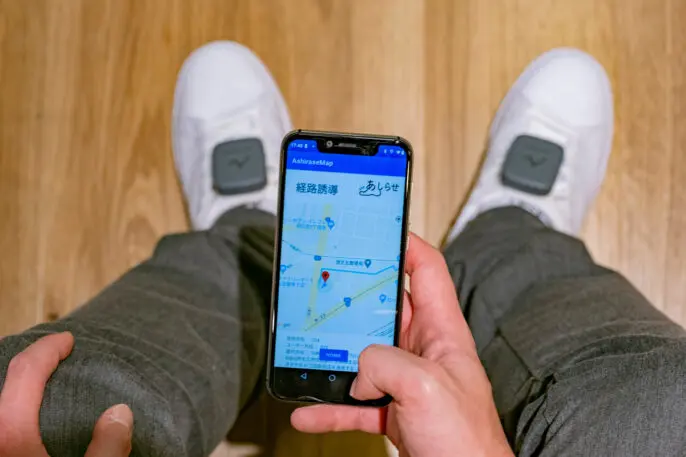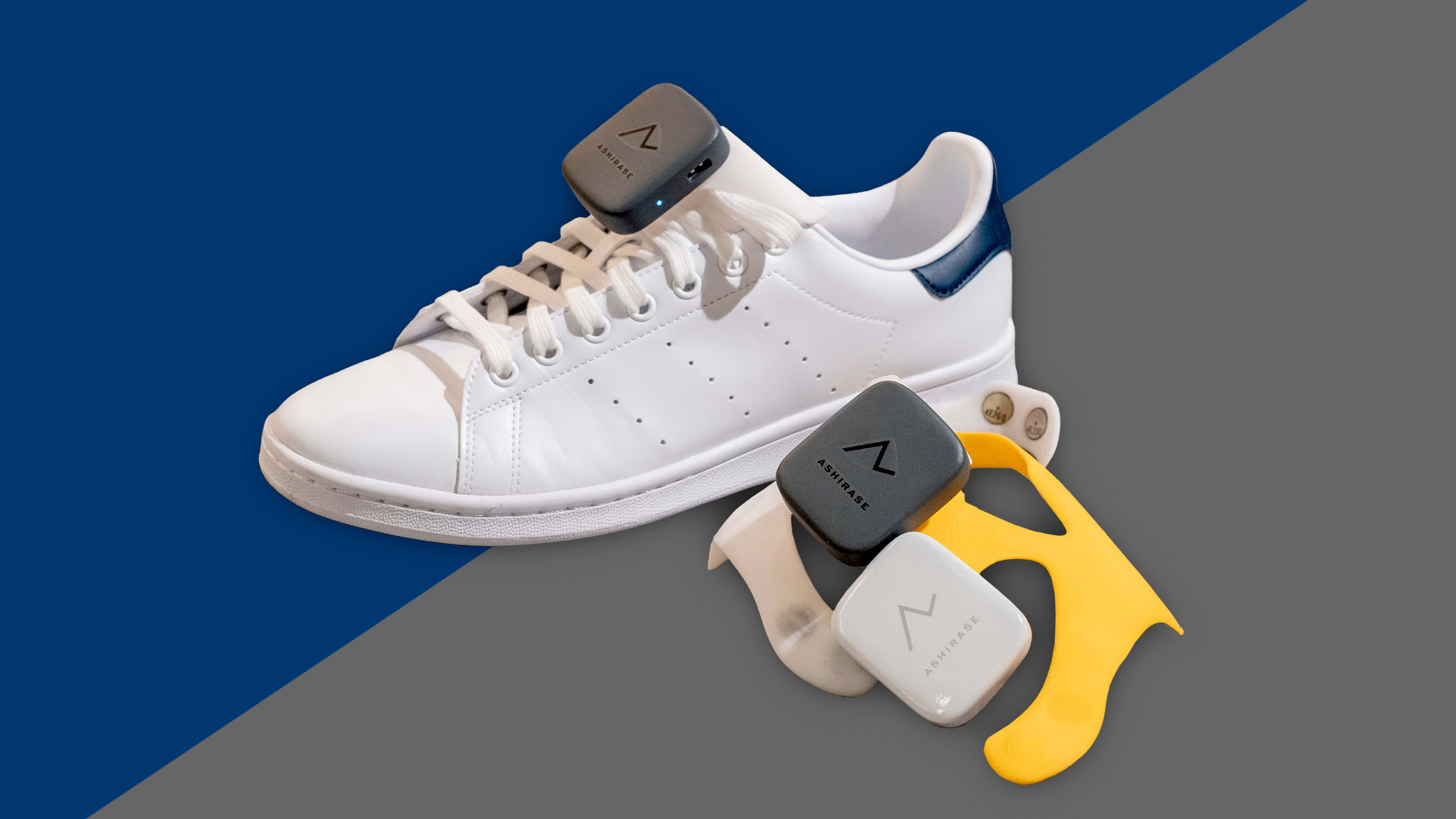While there are plenty of apps that enable people to navigate city streets, most of them require users to look at or listen to a handheld device. That’s often not a great solution for people with limited or no vision who want to use their ears to keep track of what’s going on around them and are often already using their hands to carry canes.
That’s why engineer Wataru Chino is starting Ashirase to build in-shoe devices that vibrate to help users who are blind navigate places they don’t know in a hands-free way.
Ashirase’s devices can be inserted into standard sneakers and many dress shoes and connected to a linked smartphone app to provide turn-by-turn directions after a destination is typed or spoken. But instead of signaling where to turn visually or even aurally, which blind and visually impaired people can find distracting or simply difficult to hear, the slim devices can vibrate at the left, right, or front of the shoe to indicate to users which way to travel. At corners where someone needs to turn, the devices first vibrate more broadly, signaling a stop, Chino explains.

Ashirase, announced last month, is the first company to launch through Honda’s Ignition program, which helps company employees commercialize their ideas. Chino previously worked for Honda doing R&D for electric vehicle motor control and automated driving. His new company’s name comes from the Japanese words for foot and notification.

The devices—which Ashirase aims to launch in a limited beta this fall with the goal of a broader launch next year—aren’t designed to completely replace other mobility aids. One advantage of having the devices located in the user’s shoe is that they don’t interfere with other equipment, like the white-tipped canes many visually impaired people use to find their way. The devices will likely be able to guide them around some obstructions, like road closures, using map data or potentially crowdsourced information from other users. But users will still need to use their senses to determine whether there are other things blocking a sidewalk and when it’s safe to use a crosswalk.

At present, the devices are also designed for outdoor walking based on navigation using GPS or similar systems, but future models or updates might incorporate navigational information and other signals such as Wi-Fi to help people find their way around indoor facilities like shopping malls. They may also be able to work with transit data to help users navigate trips that include both walking components and public transportation, Chino says.

Another potential evolution of the product, which currently is designed to last about three hours per day after a weekly charge, is more style-oriented: making it compatible with a wider range of shoes.
Recognize your brand’s excellence by applying to this year’s Brands That Matter Awards before the early-rate deadline, May 3.
